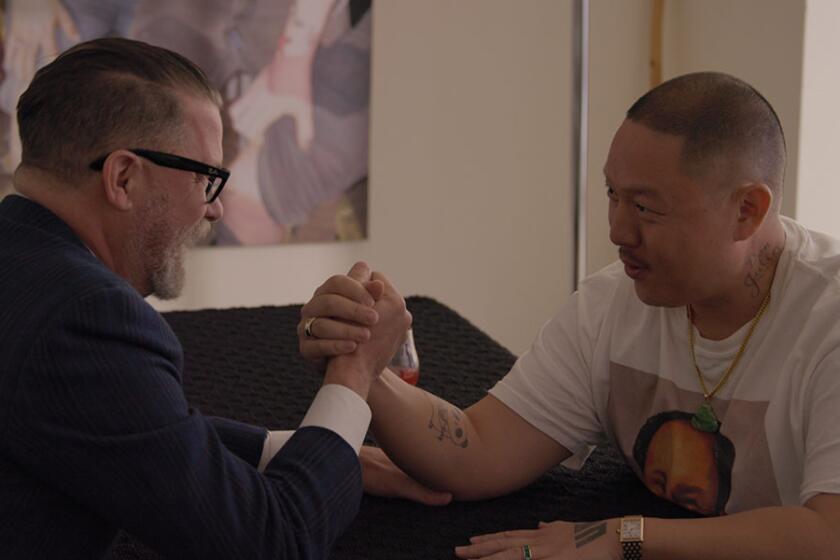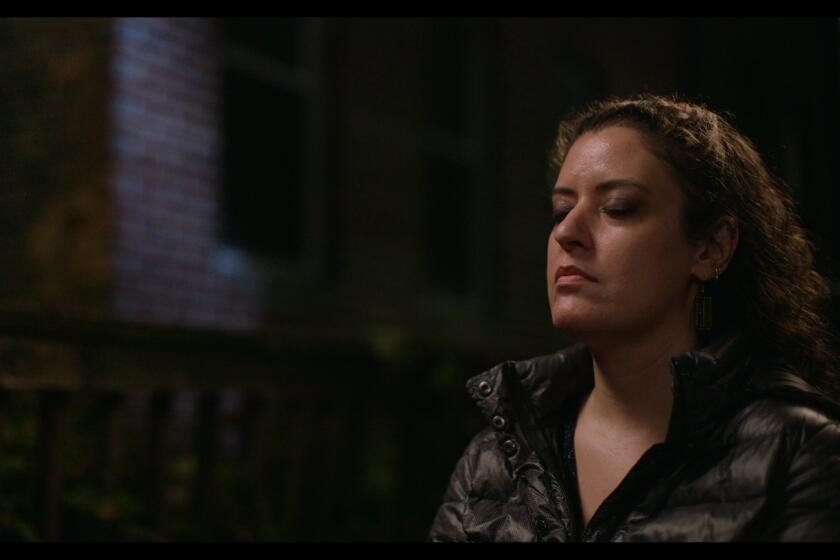Richard Fleischer, 89; Director of ‘20,000 Leagues,’ ‘Tora! Tora! Tora!’
Richard Fleischer picked up the phone more than half a century ago and was stunned. Walt Disney was on the line, asking him to direct “20,000 Leagues Under the Sea.”
“You do know who I am?” Fleischer recalled asking. His father, animation pioneer Max Fleischer, who created Betty Boop and popularized Popeye, was a bitter rival of Disney’s. Even though the Disney name was not spoken in their home, Fleischer’s father told him the opportunity was too important to pass up.
For the record:
12:00 a.m. April 3, 2006 For The Record
Los Angeles Times Monday April 03, 2006 Home Edition Main News Part A Page 2 National Desk 0 inches; 26 words Type of Material: Correction
Richard Fleischer obituary: The obituary of director Richard Fleischer in the March 27 California section incorrectly gave the name of actor Charles McGraw as Charles McGray.
The lavishly produced 1954 live-action adaptation of the Jules Verne adventure would become a box office hit and the big break that lifted Fleischer’s career off the B-movie treadmill.
He went on to direct such films as “The Boston Strangler” (1968), the Pearl Harbor docudrama “Tora! Tora! Tora!” (1970) and the science-fiction adventures “Fantastic Voyage” (1966) and “Soylent Green” (1973).
Fleischer, who directed almost 50 movies, died of natural causes Saturday at the Motion Picture and Television Country House and Hospital in Woodland Hills, said his son Mark. He was 89.
Although Fleischer was born into a show-business family, he originally wanted to be a psychiatrist. He took pre-med courses at Brown University while dabbling in musical theater, then switched to Yale University’s School of Drama.
The soft-spoken director used to joke that his background in psychology often helped him on the Hollywood set, although readers of his 1993 memoir “Just Tell Me When to Cry” might have concluded otherwise.
The candid book, which recalled his 46 years in the movie business, told tales of working with actors he considered temperamental, a list that included Robert Mitchum and Rex Harrison, whom he painted as a petulant bully on the set of the 1967 musical “Doctor Dolittle.”
“I’ve had this great opportunity ... to work with so many famous and well-known people -- stars, moguls, monsters of all sorts,” he told The Times in 1993 while sitting in the book-lined office of his Brentwood home.
In the 1958 epic “The Vikings,” actor Kirk Douglas was “very, very difficult,” Fleischer wrote, perhaps because he also was a producer. On the other hand, he wrote, Orson Welles, who starred as the defense lawyer in the 1959 courtroom drama “Compulsion,” was easy to work with but also frightening because “he knew more about directing than you did or anybody did.”
Fleischer also worked with a body builder-turned-actor named Arnold Schwarzenegger in the 1984 film “Conan the Destroyer.”
“He was a man of great talent and an extraordinary director who leaves behind a legacy of amazing films,” Schwarzenegger said in a statement.
Among Fleischer’s best-reviewed films was “The Narrow Margin,” a 1952 low-budget thriller set almost entirely aboard a train. In his “Classic Movie Guide,” Leonard Maltin calls it one of the best B-pictures ever made.
Decades later, Fleischer listed the movie as one of his favorites, recalling how it was made in 13 days for $230,000, a low budget even then.
Since he couldn’t afford to build an interior train set that moved, Fleischer made what was then a daring choice and filmed many scenes with a hand-held camera to convey a sense of movement.
The success of “The Narrow Margin,” with Charles McGray portraying a hard-boiled detective who dodges the bullets of gangsters, led to work on bigger-budget films. The director became known for having a knack for action and suspense.
Fleischer’s favorites among his films also included a trio of movies he made about real-life crimes: “Compulsion,” based on the Leopold and Loeb child-murder case; “The Boston Strangler,” made in a semi-documentary style with Tony Curtis as the killer; and “10 Rillington Place” (1971), a murder case that rocked Britain in the 1940s.
He won his only Oscar in 1947 for a post-World War II documentary he produced but did not direct, “Design for Death,” which was written by Theodor Geisel who would become better known as Dr. Seuss, and Geisel’s first wife, Helen Palmer. The day Fleischer received the Academy Award, his father sent him a telegram that said, “What took you so long?” He was 31.
His son Mark remembered his father as a gentle man who always put his family first. “My parents made a great effort to insulate their children from the craziness of Hollywood,” he told the Associated Press. “They made sure our lives were as normal as possible.”
Born Dec. 8, 1916, in Brooklyn, N.Y., Fleischer was the second child of Max and Essie Fleischer.
In the early 1920s, his father and his uncle Dave founded Fleischer Studios. His father also invented and patented the rotoscope, an early device that enabled filmmakers to put liveaction and animated characters in the same scene.
Another of Fleischer’s uncles, Lou, ran the studio’s music department, and for years voiced Wimpy, Popeye’s hamburger-hungry friend.
At Yale, Fleischer organized a campus theater company that toured New England hotels. He also married Mary Dickson, a fellow student.
A talent scout for RKO recommended him for a job, and he was hired to write scripts for RKO Pathe newsreels, and soon graduated to directing shorts.
After serving in the Army Air Forces during World War II, Fleischer came to Hollywood in 1945 as a contract director for the B-picture unit at RKO Pictures.
He made such movies as “Banjo” and “Child of Divorce” with Sharyn Moffett, who was billed as the next Shirley Temple but never was.
“The old school had something going for it. If you made it through hit pictures, you were nicely taken care of by the studio. If you didn’t, you were nicely ushered out the door,” Fleischer told Los Angeles Magazine in 2004.
“The Happy Time,” a 1952 film that featured Charles Boyer and Disney child star Bobby Driscoll, convinced Disney to offer him his directorial breakthrough on “20,000 Leagues Under the Sea.” The fantasy adventure starred James Mason as the megalomaniacal Captain Nemo and is famously remembered for a battle with a giant squid.
When Fleischer asked Disney why he had been chosen to direct the $5-million film -- then one of the most expensive movies made -- the studio chief said, “Anybody who can make an actor of Bobby Driscoll has to be a great director.”
In addition to his son Mark, Fleischer is survived by his wife of 62 years; another son, Bruce; a daughter, Jane; and five grandchildren.
Instead of flowers, the family requests that memorial contributions be sent to the Motion Picture and Television Fund, 22212 Ventura Blvd., Suite 300, Woodland Hills, CA 91364.
More to Read
Only good movies
Get the Indie Focus newsletter, Mark Olsen's weekly guide to the world of cinema.
You may occasionally receive promotional content from the Los Angeles Times.











